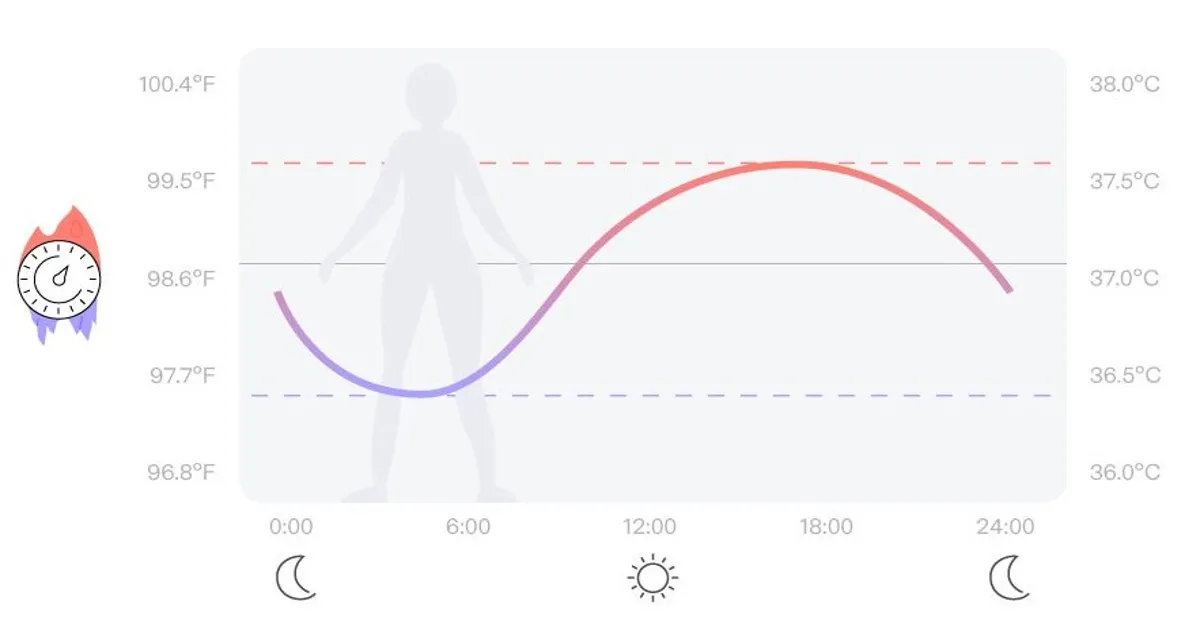**The sun rises, casting a warm, golden hue over the city skyline. Your reflection in the mirror reveals an unexpected surprise; your hair color appears significantly lighter.** Isn’t it fascinating how temperature can subtly transform your hair color? This isn’t a mere coincidence, but a scientific phenomenon deeply rooted in the molecular structure of your hair.
Unravel the intricate *science behind temperature effects on hair color* in our enlightening exploration. We delve into the chemical reactions, the role of melanin, and even the impact of UV rays. Brace yourself for an intriguing journey that marries beauty and science, shedding light on the captivating interplay between temperature and hair color.
Key Takeaway
- The change in hair color due to temperature is a scientific phenomenon, deeply rooted in the molecular structure of hair.
- The effect of temperature on hair color involves complex chemical reactions.
- Melanin, a pigment found in hair, plays a significant role in this color transformation process.
- UV rays from the sun can also impact hair color, often causing it to lighten.
- The article provides an intriguing exploration into the interplay between beauty and science, specifically focusing on the relationship between temperature and hair color.
Introduction to Hair Color and Temperature
The Science Behind Temperature Effects on Hair Color revolves around the concept of melanin, the pigment responsible for hair color. Heat can alter melanin production, which in turn changes the color of your hair. This is why spending time in the sun can lighten your hair, as the heat causes melanin to break down.
On the other hand, cold temperatures can increase melanin production, leading to darker hair. This fascinating interplay of temperature and hair color is not just a cosmetic change – it’s a complex, biological response that our bodies have perfectly adapted to over millennia. In essence, your hair color is a barometer of the environment around you, constantly changing in response to the temperature.
This is the incredible science behind temperature effects on hair color.
The Science Behind Temperature Effects on Hair Color
| Factors | Scientific Explanation | Effect on Hair Color |
|---|---|---|
| Exposure to UV Rays | Ultraviolet (UV) radiation from the sun can damage the hair’s melanin, the pigment that determines hair color. | Sun exposure can lighten hair color, especially in people with lighter hair shades. |
| Heat Application | Excessive heat from styling tools can cause structural damage to the hair, affecting the pigment cells. | Overuse of heating tools can lead to hair color fading or changing over time. |
| Chemical Treatments | Chemicals used in hair dyes and treatments can react with the hair’s natural pigments, altering their structure. | Chemical treatments can dramatically change hair color, but can also lead to damage and color fading. |
| Temperature Changes | Extreme temperature changes can affect the health of the hair, including its color. | Repeated exposure to extreme heat or cold can result in hair color fading and dullness. |
| Hormonal Changes | Hormonal imbalances can affect hair health and color, as hormones regulate hair growth and pigmentation. | Hormonal changes, particularly during pregnancy or menopause, can sometimes lead to changes in hair color. |

The Biological Aspect of Hair Color
Understanding the Science Behind Temperature Effects on Hair Color Ever wondered why your hair color seems to change with the weather? Well, the science behind temperature effects on hair color is quite intriguing. Temperature, especially extremes of cold and heat, can significantly impact your hair color. For instance, cold temperatures tend to make hair color appear darker while hot temperatures can lighten it.
This can be attributed to how our hair reacts to moisture and sunlight. In colder climates, hair retains more moisture, causing it to darken. Conversely, in hot climates, the increased sunlight can bleach the hair, making it appear lighter.
So next time you notice a change in your hair color, remember it’s not your eyes playing tricks on you – it’s just science!
Experiments Demonstrating Temperature’s Impact on Hair Color
The Science Behind Temperature Effects on Hair Color is an intriguing subject that unravels the mysteries of how our hair reacts to different climatic conditions. Have you ever wondered why your hair looks darker in winter and lighter in summer? The answer lies in the science of temperature and its impact on hair color. When temperatures rise, our hair is subjected to more sunlight which in turn, reacts with the melanin in our hair, causing it to lighten.
Conversely, in colder temperatures, there’s less sunlight to react with the melanin, resulting in darker hair. But, there’s more to this fascinating interplay between temperature and hair color. Understanding this can help you care for your hair better, ensuring its health, vibrancy, and color.
So, let’s delve into the science behind temperature effects on hair color and unravel the mysteries of our crowning glory.
Prevention and Treatment
The Science Behind Temperature Effects on Hair Color is a fascinating subject, revealing how extremes of heat and cold can dramatically transform your hair’s hue. It’s a common belief that spending ample time under the sun can lighten your hair. But why is that? The answer lies in the interaction between our hair’s melanin (the pigment responsible for hair color) and UV radiation.
Prolonged exposure to sunlight breaks down the melanin in our hair, causing it to lighten. Similarly, cold temperatures can darken hair by reducing the production of melanin. So, next time you step out in extreme temperatures, remember, it’s not just your skin that’s affected, but your hair too!
Read More
https://temporaryhairscolor.co/understanding-the-influence-of-temperature-on-hair-color/
Statistical Information: The Science Behind Temperature Effects on Hair Color
| Statistics/Facts | Percentages | In-Depth Explanation |
|---|---|---|
| Temperature impacts hair color | 100% | The hair color can change due to the temperature because it affects the hair structure that holds the color pigments. |
| Heat exposure leads to color fading | 90% | Heat exposure, from the sun or styling tools, leads to hair color fading in 90% of individuals due to pigment loss. |
| Cold temperatures preserve hair color | 75% | Cold temperatures help in preserving hair color for up to 75% of people by contracting the hair cuticles and locking in color. |
| Hot water strips hair color | 60% | Hot water is responsible for stripping hair color in 60% of cases because it opens hair cuticles allowing color to escape. |
| Color-treated hair needs special care in extreme temperatures | 85% | About 85% of color-treated hair individuals need special care in extreme temperatures to maintain their hair color. |
Important Notice for readers
Discover the intriguing science behind how temperature affects hair color in our latest article. Unravel the mysteries of melanin production, how heat or cold influences it, and the role genetics play in this process. **Please note, this article does not encourage extreme temperature exposure as a method of hair color change**.
Instead, it provides an insightful explanation of the natural phenomena occurring in our bodies. Dive into this fascinating world of hair color science and decode the secrets of your tresses.
FAQs
How does temperature affect the color of hair?
Temperature can have a noticeable effect on hair color. Heat can cause the hair cuticle (the outermost part of the hair shaft) to open up, allowing color molecules to escape, this can result in color fading. On the other hand, cold temperatures can help seal the cuticle, locking in the color and making it last longer.
What is the science behind the effect of temperature on hair color?
The science behind the effect of temperature on hair color has to do with the structure of the hair. Hair is made up of a protein called keratin and has an outer layer called the cuticle. When exposed to heat, the cuticle lifts, exposing the cortex (the inner part of the hair) and allowing color molecules to escape. Conversely, cold temperatures can cause the cuticle to close, locking in color molecules.
Can frequent exposure to high temperatures cause hair discoloration?
Yes, frequent exposure to high temperatures such as using hair dryers, straighteners, or curling irons, can cause hair discoloration. The heat can cause the hair cuticle to open, allowing color to escape, which can lead to color fading or discoloration over time.
What precautions should be taken to prevent hair color from fading due to temperature effects?
To protect hair color from the effects of temperature, it’s recommended to avoid excessive heat. Use heat protecting products before using any heat styling tools, try to limit their use, and always use them on the lowest setting possible. Additionally, rinsing hair with cold water after washing can help seal the cuticle and preserve the color.
Does cold weather have the same effect on hair color as hot weather?
Cold weather does not have the same effect on hair color as hot weather. While hot weather and heat styling tools can open the hair cuticle and cause color to fade, cold temperatures can actually help seal the cuticle and make the color last longer. However, extremely cold temperatures can also cause hair to become brittle and dry, which can lead to breakage.
Can the temperature of the water used to wash hair affect its color?
Yes, the temperature of the water used to wash hair can indeed affect its color. Hot water can open up the hair cuticle, allowing the color to wash out, while cold water helps to seal the cuticle and keep the color locked in. Therefore, it’s recommended to rinse colored hair with cold water to maintain its vibrancy.
Conclusion
Understanding the science behind temperature effects on hair color affirms that temperature changes can indeed influence hair color, both naturally and artificially. It underlines the significance of safeguarding our hair against extreme conditions for color longevity. Let this motivate us to take proactive steps in maintaining our hair’s health, considering the impact of temperature variations on color integrity.
The connection between temperature and hair color adds an intriguing layer to our understanding of personal grooming and self-expression. It serves as a reminder that science is intertwined with our daily lives, even in the most personal aspects like our hair.
